Medical expert of the article
New publications
Preparations
Ointments for sciatica
Last reviewed: 04.07.2025

All iLive content is medically reviewed or fact checked to ensure as much factual accuracy as possible.
We have strict sourcing guidelines and only link to reputable media sites, academic research institutions and, whenever possible, medically peer reviewed studies. Note that the numbers in parentheses ([1], [2], etc.) are clickable links to these studies.
If you feel that any of our content is inaccurate, out-of-date, or otherwise questionable, please select it and press Ctrl + Enter.
Radiculitis ointment is a necessary remedy in the medicine cabinet for people who have ever felt back pain. It is quite popular, easily accessible and emergency help for pain relief. The remedy can be prescribed for muscle spasms, to relieve swelling and inflammation, and to restore the function of the nerve root.
Radiculitis is a disease that requires complex treatment. Ointment is a necessary component of treatment because the active components begin to act on painful areas immediately after application. Such a rapid reaction of the drug occurs because in a short period of time it penetrates to the problem area through the pores on the skin and many blood capillaries.
Most often, warming ointments are used for radiculitis, the active components of which act on the affected area as an analgesic, reduce the inflammatory process, improve microcirculation and nutrition in the tissues.
Self-medication is not recommended; you should consult a doctor to receive the necessary assistance and determine the causes of the pain.
 [ 1 ]
[ 1 ]
Pharmacodynamics and pharmacokinetics
Pharmacodynamics of the ointment for radiculitis consists of a pronounced anti-inflammatory and analgesic effect. It is also able to relieve swelling and reduce post-traumatic pain.
The clinical effect of the drug is manifested in local application. The active substances are absorbed through the skin quite quickly and act on the affected areas almost instantly.
Pain-relieving ointments for radiculitis
Contains active substances that act anti-inflammatory and analgesic on painful areas. Also has a rapid resorption.
Used for pain, swelling, post-traumatic syndromes.
Directions for use: Apply the ointment to the area that causes pain and rub in with gentle, circular motions, 2 to 4 times a day. The ointment is well absorbed and leaves no greasy marks or shine.
Shelf life is 3 years.
Diclofenac ointment for radiculitis
A non-steroidal drug with anti-inflammatory action, which is very slowly and poorly absorbed into the skin (3-6% of the applied dose). It also has antirheumatic and antipyretic properties, effectively relieves pain.
Indications for use: pain in the spine, joints, neuralgia, myalgia, rheumatism, inflammation and pain syndromes after surgery, injuries.
Apply 4-8 cm of squeezed ointment with circular massage movements to the affected areas. Rub gently 3-4 times a day.
Minor symptoms may include allergic rashes, itching, redness, and a burning sensation.
Because the drug has little systemic absorption, overdose is unlikely.
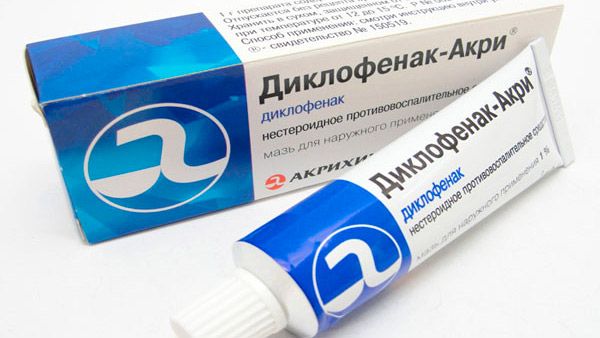
The ointment can be used with other medicinal products.
It is not recommended for use in case of hypersensitivity to the components, skin damage, during breastfeeding, in the third trimester of pregnancy, for children under 6 years of age.
Shelf life is 3 years.
Finalgon ointment
The product contains vasodilator active ingredients, which are powerful thermal irritants to the skin. When applied to the skin, the effect lasts for several hours. This promotes better blood circulation.
Used to treat muscle and joint pain.
Contraindications: increased sensitivity to the components of the ointment, skin inflammation, open wounds or abrasions, dermatitis.
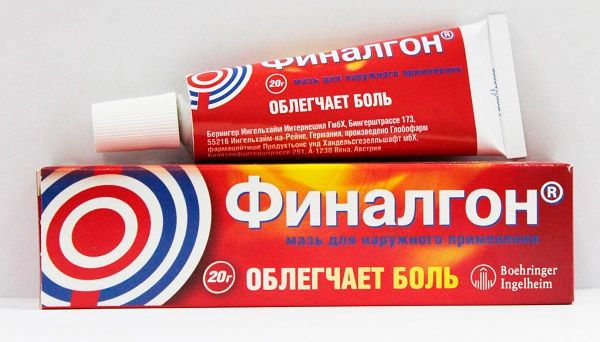
Side effects may include hives at the site of application of the ointment, sometimes even the appearance of blisters on the skin, and there may also be itching and burning.
In case of overdose, hyperemia is possible, which causes pain, decreased blood pressure, and an increase in body temperature.
Use during pregnancy and breastfeeding is prohibited. It is also not advisable to use the drug for children.
Shelf life is 4 years.
Ointment for radiculitis with snake venom
The main active component of the drug is snake venom, which contains peptides of specific action that can provoke hemolysis and increase the permeability of blood capillaries. This affects blood clotting. When used locally, snake venom is characterized by an irritant and analgesic effect.
Salicylic acid, which is one of the components of the ointment, has a disinfectant and keratolytic effect.
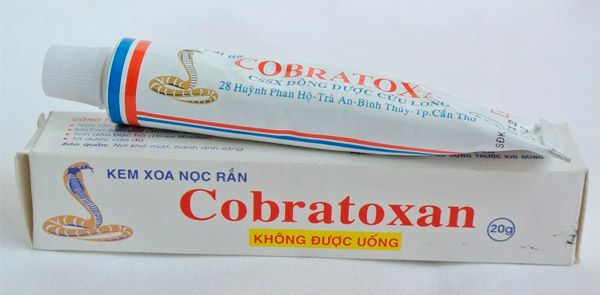
This preparation with snake venom is recommended for use in cases of muscle pain, as well as painful sensations in the joints.
Contraindications: hypersensitivity to the components of the ointment, bronchial asthma, tendency to bronchospasm and convulsions, whooping cough, ulcers and wounds on the skin, dermatitis, pulmonary tuberculosis, circulatory disorders, severe liver and kidney dysfunction, fever, general fatigue.
Directions for use: To avoid side effects, apply a small amount of ointment to the skin in advance to determine the skin's sensitivity to the drug. Apply a walnut-sized amount of ointment to the affected area and rub it in 1-2 times a day. The healing time depends on the severity of the disease and associated diseases.
It is not recommended to use during pregnancy, breastfeeding or for children.
In case of special sensitivity to the components of the ointment, itching, swelling, urticaria, allergic reactions, rashes, redness, burning may occur, and convulsions and dizziness are also possible.
Shelf life is 3 years.
Dikul's ointment for radiculitis
The ointment is used for radiculitis, arthritis, gout, neuralgia and muscle inflammation.
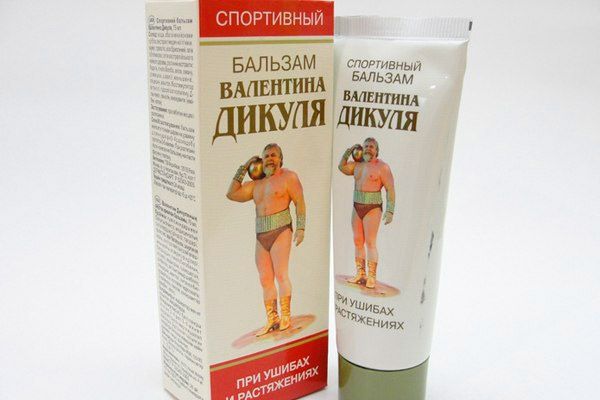
Directions for use: Rub in gently, without pressing too hard on the sore spot, for 2-3 minutes three times a day. After using the medicine, it is advisable to wrap the affected area in woolen cloth. Treatment can last from 1 to 6 weeks.
Contraindicated in case of individual intolerance to the components of the ointment.
Shelf life is 24 months.
Ointment for radiculitis with bee venom
Bee venom, which is the main component of the ointment, improves blood circulation, accelerates the removal of toxic and harmful metabolic products from the site of inflammation, which helps reduce pain.
It is used for radiculitis, inflammatory diseases of the joints, myalgia and pain sensations in traumatic injuries of muscles, tendons, ligaments, neuralgia, neuritis, peripheral disorders of local blood circulation.
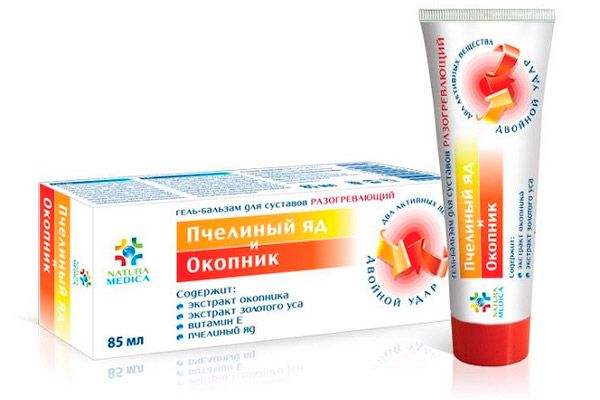
The drug is contraindicated in case of individual sensitivity to the components of the ointment, liver and kidney failure, skin diseases, acute joint inflammation, hemorrhagic diathesis, open wounds or abrasions on the skin.
It is not recommended to use the drug during pregnancy and breastfeeding, as well as for children under 12 years of age.
Directions for use: squeeze 3-5 cm of ointment onto the painful area and wait for the body's reaction for up to 2 minutes. If there is no redness or burning, rub the squeezed ointment into the skin with slow circular movements 2-3 times a day. After the procedure, it is recommended to keep the painful area warm.
Side effects: skin irritation, dermatitis, allergic reaction, skin rash, burning, itching.
Shelf life is 3 years.
Kuznetsov's ointment for radiculitis
The ointment contains bee venom and plant-based components, which together provide an effective result in the treatment of radiculitis. The preparation is completely natural and does not contain analgesics.
Promotes rapid recovery of the body after heavy physical exertion, improves blood circulation in the areas of use. Used for rheumatic diseases, radiculitis, inflammation of the sciatic nerve, injuries, bruises.
Apply 1.5-2 cm of ointment to the affected area and rub in gently, massaging lightly 1-2 times a day. If no allergic reactions occur, increase the dose to 5 cm of ointment per application. Three days after the start of use, it is recommended to take a break for 1 day.
Side effects: urticaria, tissue swelling, burning, itching.
It is not recommended to use the ointment during pregnancy, breastfeeding, or for children.
Shelf life is 3 years.
Chinese ointment for radiculitis
Contains snake fat, snake venom, vitamin E and Chinese herbs.
The ointment can be used for diseases of the lumbar and cervical spine, rheumatoid arthritis, heel spurs, and muscle spasms.
Method of application and dosage: apply to problem areas that cause pain and massage into the affected area 2-3 times a day. It is strictly forbidden to use the ointment on open wounds, pregnant and lactating women.
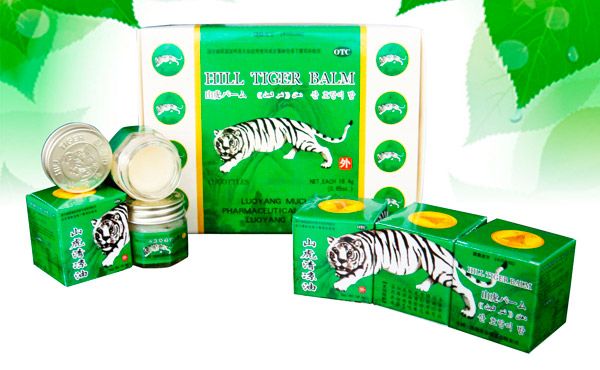
Redness and allergic rashes are also possible in case of overdose.
Radiculitis ointment is a local treatment, but it can effectively eliminate pain, relieve inflammation, and physical strain. But you should not limit treatment to the use of drugs in this group, be sure to consult a doctor for diagnosis and an accurate diagnosis in order to prescribe the correct treatment.
Attention!
To simplify the perception of information, this instruction for use of the drug "Ointments for sciatica" translated and presented in a special form on the basis of the official instructions for medical use of the drug. Before use read the annotation that came directly to medicines.
Description provided for informational purposes and is not a guide to self-healing. The need for this drug, the purpose of the treatment regimen, methods and dose of the drug is determined solely by the attending physician. Self-medication is dangerous for your health.

